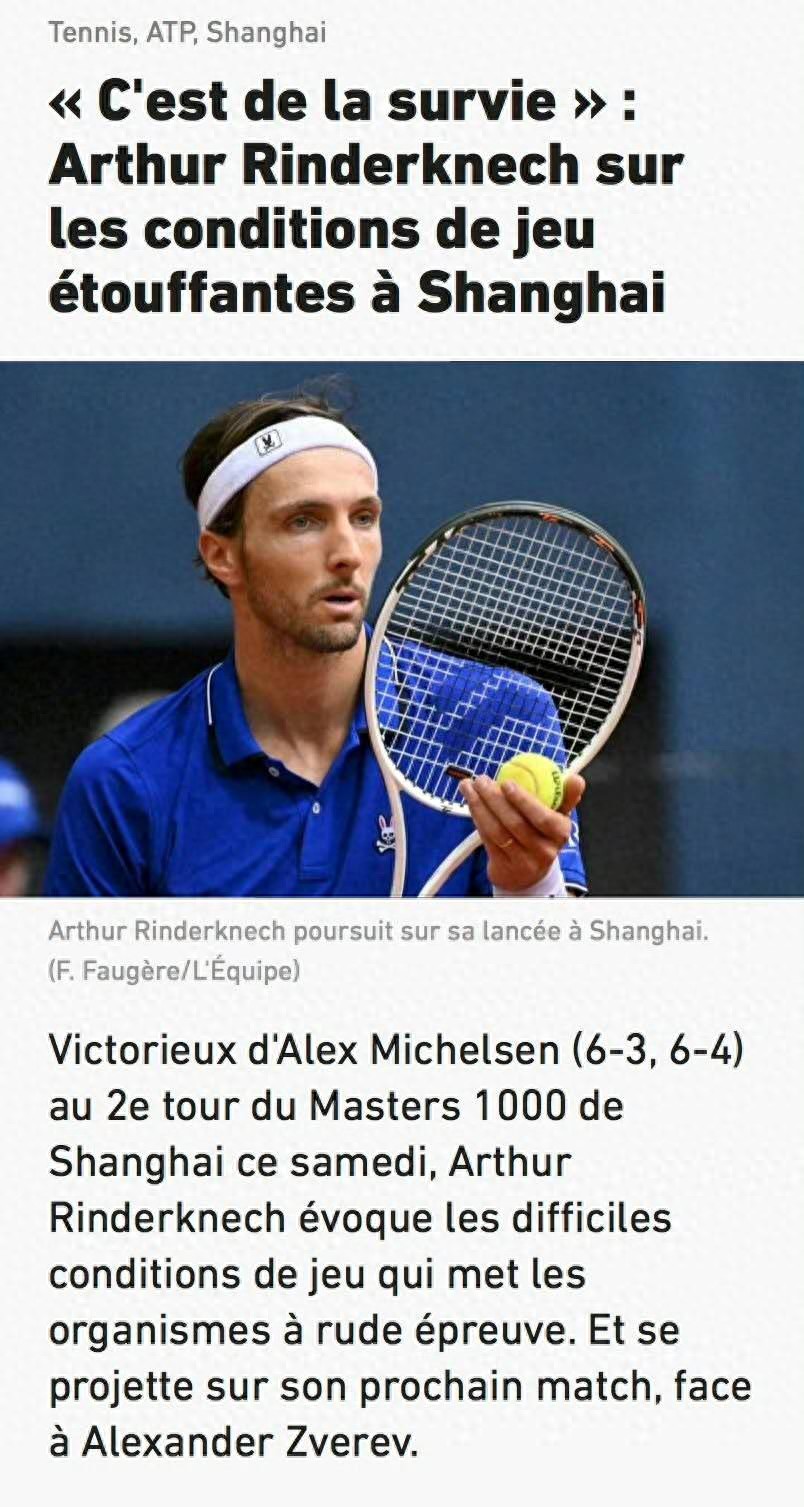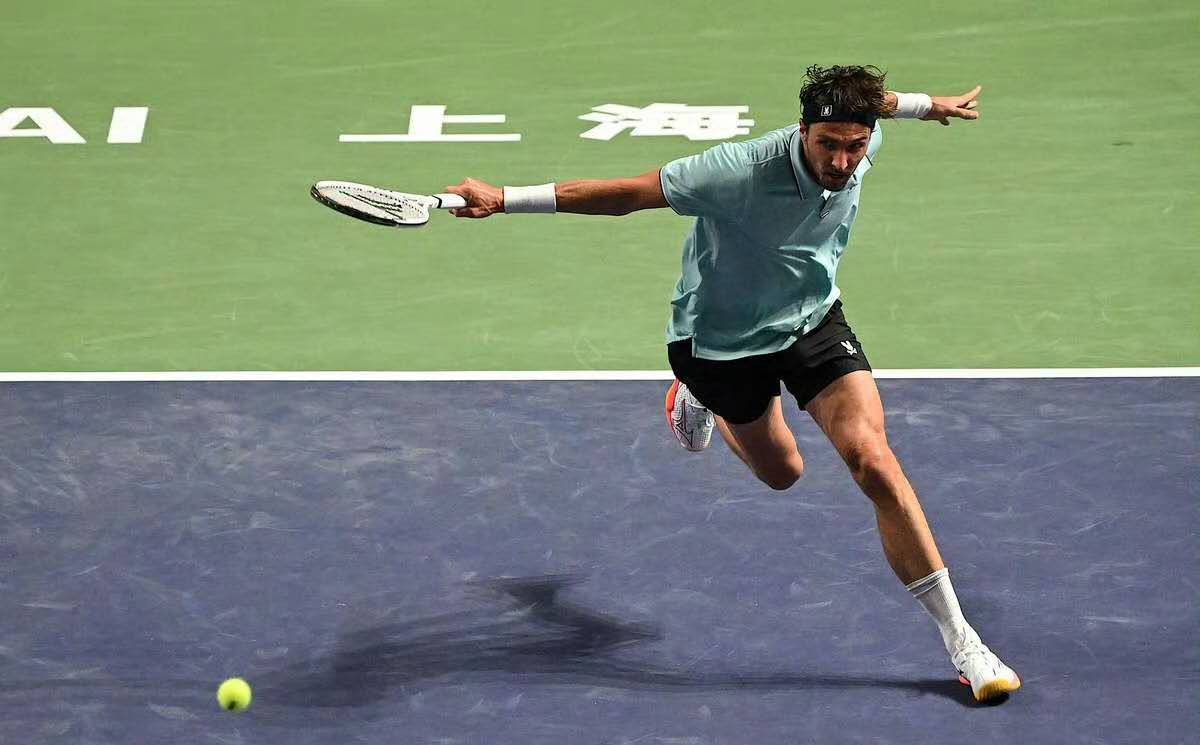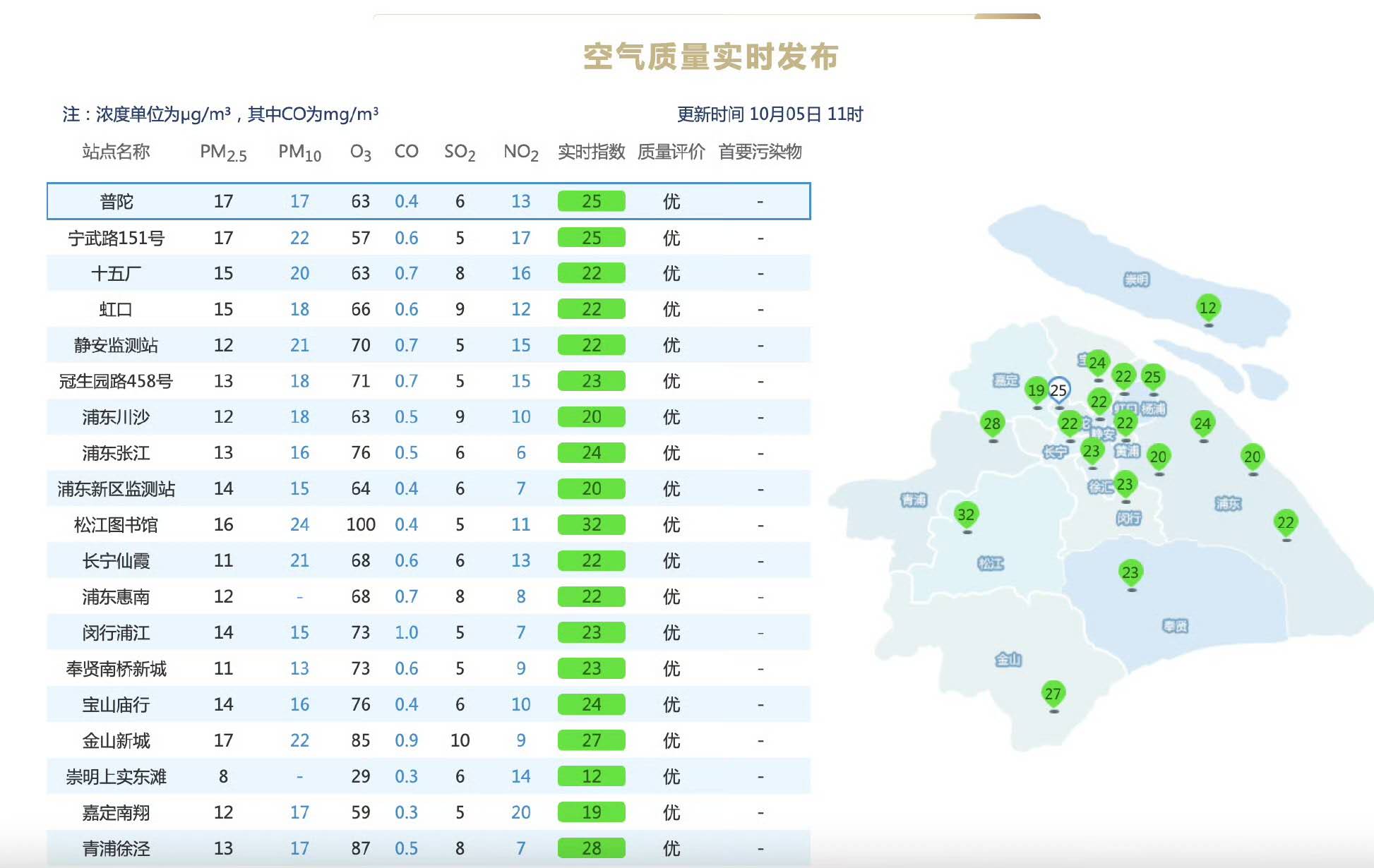Lindekeshi: Pollution in China's big cities is extremely severe, making it hot and hard to breathe on the court.
Yesterday, following his 6-3, 6-4 victory over Mickelson in the second round of the Shanghai Masters, French player Lindekeshi discussed Shanghai’s muggy weather and complained about the heavy pollution in China's large cities during an interview with L'Équipe.

In the interview, Lindekeshi noted that, similar to his last match against Majerovic, this was another game played under challenging conditions. However, he admitted that unlike the previous match, he now confirms it was genuinely difficult to breathe on the court. “I’m not sure if the TV broadcast fully captures it, but from warm-up onward, it was tough out there. The humidity is insanely high—worse than summer in the U.S.”
He then directed his criticism at China, saying, “And we all know that pollution in China’s big cities is severe, which certainly doesn't help with normal breathing. Plus, the pervasive cloud cover means when the sun breaks through, temperatures quickly soar past 30 degrees, making the match extremely demanding.”

He also mentioned that staying calm in such stifling heat is definitely not easy for players. He said Mickelson was quite irritable toward the end of the match, and when the blazing sun beats down on us, it’s hard for both sides to maintain composure, with negative emotions surfacing quickly.
Lindekeshi’s remarks sparked a wave of dissatisfaction among fans online! Some fans said, “Lindekeshi harshly criticized Shanghai’s hot weather after the match and claimed pollution in China's big cities is severe. This French player seems poorly informed—have they never heard of subtropical high-pressure heat before? They should learn the difference between hot, cloudy weather and just smog!”
Other netizens believed Lindekeshi would likely join Musetti and Townsend on the blacklist of Chinese fans, calling his sweeping generalizations blatant “arrogance and prejudice.”

However, according to air quality monitoring platform IQAir, on October 5, Shanghai’s PM2.5 concentration was about 17 µg/m³, roughly matching the World Health Organization’s annual guideline, with a real-time index of 25 indicating excellent air quality. Additionally, data shows Shanghai’s average PM2.5 concentration in 2024 is 14.5 µg/m³, meaning current levels are not significantly higher than the yearly average, disproving the French player’s complaints as baseless.
It is worth noting that today Shanghai’s temperature was indeed very high, with a peak of 35 degrees Celsius and humidity between 60% and 65%! This caused many players to withdraw, including Mahach retiring at 6-0, 3-1, allowing Vasherlo to advance; Goffin quit after only three games in the first match on Court 2; and Rune showed signs of heatstroke halfway through the first set on the main court, requiring a blood pressure check during the break.
Seeing so many withdrawals or incomplete matches clearly shows that the heat is affecting players’ mental and physical states. Although the Shanghai Masters officials announced today that players could receive cooling patches and other supplies to prevent heatstroke, the effects appear to be limited.

Regarding this, the Frenchman continued, “But the playing conditions are the same for everyone. Even though this week is about tennis, there is a battle unrelated to tennis going on. This is a survival fight, requiring the art of managing to find a way to win. Self-control is crucial; you must know how to get your body into the best condition. When I see the stands filled with sweating spectators—even the locals drenched—I realize it’s not just us enduring this challenge.”
It is foreseeable that opinions on Lindekeshi’s comments will vary. However, the court acts as a mirror, reflecting not only the athletes’ struggles but also cultural differences and clashes of perspectives that we must confront!(Source: Tennis Home, Author: Lu Xiaotian)







 Links
Links
 Contact
Contact
 App
App


